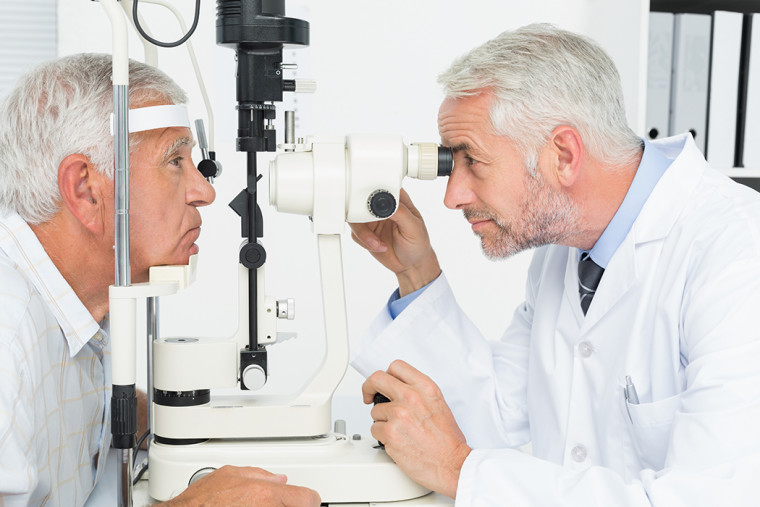All Categories
Featured
Table of Contents

Regular eye exams are vital for keeping excellent vision and identifying possible eye wellness issues early. The frequency of these tests can differ considerably based on a person's age, way of life, and overall health. Understanding the advised routine for eye tests can help make sure that individuals of any ages receive suitable care and tracking for their eye wellness.
Newborns and Toddlers (0-2 Years)
For babies and kids, eye examinations are vital for discovering any possible vision problems early. The American Academy of Ophthalmology suggests that a kid's initial eye test ought to take place at around 6 months old. Throughout this preliminary visit, the eye care professional will assess the youngster's aesthetic growth and look for any kind of apparent eye concerns.Following this initial test, it is advised that kids have one more eye examination at age three. This browse through will certainly concentrate on assessing the kid's total aesthetic feature, including eye placement and the ability to track objects. If no issues are detected, the following test should be arranged before the child begins school, typically around age 5 or six.
School-Aged Children (6-18 Years)
Once youngsters reach school-age child, normal eye examinations must be scheduled every one to two years. Vision is crucial for finding out and development, and many institutions conduct vision testings. However, these screenings do not replace an extensive eye examination by an eye treatment professional.For youngsters involved in tasks or sporting activities needing substantial visual emphasis, annual eye exams might be suggested. In addition, if a youngster displays indications of vision problems-- such as trouble reading, squinting, or constant migraines-- a check out to the eye physician ought to be scheduled as soon as possible.
Young Person (19-39 Years)
Young grownups usually have fewer vision adjustments than older age, yet regular eye exams continue to be essential. The general referral is to set up an eye examination every 2 years throughout this duration. However, individuals with details risk variables-- such as a household history of eye condition, diabetes mellitus, or those who use call lenses-- need to take into consideration yearly eye examinations.Furthermore, those who spend significant time on electronic devices may experience digital eye strain. If symptoms such as dry skin, fatigue, or obscured vision happen, it may be smart to see an eye care expert quicker.
Grownups (40-64 Years)
As individuals enter midlife, the probability of developing vision problems boosts. Adults aged 40 to 64 ought to arrange eye exams every one to two years. This age group might start to experience presbyopia, a natural age-related problem that makes it testing to focus on close objects. Eye exams can likewise aid spot various other typical age-related conditions such as glaucoma, cataracts, and macular deterioration.If individuals in this age have threat variables like high blood stress or diabetes mellitus, they might need more frequent assessments to check their eye health closely.
Elders (65 Years and Older)
For senior citizens, normal eye exams end up being even extra essential. The American Optometric Organization recommends that individuals matured 65 and older have an eye examination at the very least annually. Older adults go to a higher threat for different eye illness, including cataracts, glaucoma, and age-related macular deterioration. Early discovery and therapy of these problems can protect against vision loss and boost the high quality of life.Conclusion.
Understanding the ideal timetable for eye tests based on age is essential for maintaining optimal eye health throughout life. By adhering to these guidelines and seeking advice from with an eye care professional, people can take aggressive steps toward maintaining their vision and general health.Table of Contents
Latest Posts
Experience the Boogaloo: Eating, Drinks, & Sports at FunCity Hotel
Published en
2 min read
The Boogaloo Sports Bar & Grill at FunCity Resort Resort: Where Enjoyable Fulfills Flavor
Published en
2 min read
Experience the Boogaloo: Eating, Drinks, & Sports at FunCity Hotel
Published en
2 min read
More
Latest Posts
Experience the Boogaloo: Eating, Drinks, & Sports at FunCity Hotel
Published Feb 03, 25
2 min read
The Boogaloo Sports Bar & Grill at FunCity Resort Resort: Where Enjoyable Fulfills Flavor
Published Jan 31, 25
2 min read
Experience the Boogaloo: Eating, Drinks, & Sports at FunCity Hotel
Published Jan 23, 25
2 min read